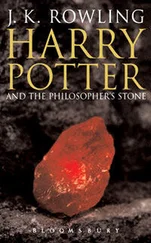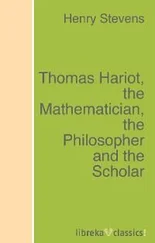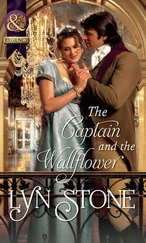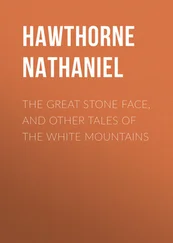Helen was about to ask the professor about that when he glanced at his watch and announced, “You’ll have to excuse me, ladies. I see that is time for me to go help prepare dinner for my wife and myself. You really should make an appointment to see me in the office. I can show you more about the information contained in the sculpture. There is a sign-up sheet on the door.”
“I hope that your dinner is more perfect than ours is likely to be,” Helen said somewhat absent mindedly.
Professor Wood gave her a quizzical look and bid them adieu . He turned to gather his tools and to place the model sculpture into a box that had been padded to receive it. Helen and Marie continued on their way to the dorm.
As they walked, Helen told Marie about her interpretation of the spiral stairs on the model sculpture. “Do you think that the sculpture is supposed to be a path to heaven?”
“I think that is unlikely,” Marie responded. “Remember that he told us that each step represents a specific element in the periodic table. The shape of the step has something to do with the physical properties of the element in its pure form. Plus, you would have to start at the bottom with the most complex elements and work your way up to the simplest one, ending with Hydrogen. Okay, maybe Hydrogen does represent a kind of simple perfection that the ancients never dreamed of. But why would he carve a cap on the top of the spire that separates the path from the cosmos?”
Helen thought about the cap at the top of the model. It looked like a mushroom to her. She shuddered at her next thoughts: Hydrogen, mushroom. “Marie, what if the cap is supposed to be a mushroom cloud! What if the professor is showing us a short-cut to infinity via a nuclear disaster?”
“Helen! Get a grip on yourself. The guy is a Professor of Physics, not a global terrorist!”
“How can we be sure?” Helen asked with a wild-eyed look.
“I’ll tell you what,” Marie said in a soothing tone. “I’ll sign us up for an office visit. Maybe you can think of a few questions to ask him that will put your mind at ease.”
The next day, Marie went to the Physics Building on her way to her first class. She signed in for the first available office hour, late the following afternoon. As she headed for the exit to the Quad, she happened to see Professor Wood on his way into the building.
“Have you signed up for an office hour?” the professor asked.
“I have. I figured it was time. Helen thinks that you are planning to blow up the world”
Professor Wood roared with laughter. “It is definitely time for an extended chat,” he agreed.
Several other students on their way to physics classes turned to catch the usually serious-minded professor in such a jovial mood.
Later that day, as Marie entered the cafeteria, Helen was just coming out.
“Oh, by the way, I signed us up for Professor Wood’s office hour tomorrow afternoon! I almost forgot to tell you,” Marie said. “Let’s meet in front of the Library and go over to the Physics Building together.”
“See you there!” Helen replied with a bright smile.
The two young women met as planned the next afternoon and arrived punctually for their meeting in the professor’s office.
The professor was smiling as he responded to their knock on the door. “Please come in. May I offer you some coffee or tea?”
“Or maybe some confusum chaos ,” Helen suggested testily.
The professor chuckled at Helen’s expression. “Your friend here tells me that I may have misled you by possibly overstating the connection between my sculpture and alchemy. I suggest that we spend this meeting clearing up some of the confusion – by which I do not mean confusum chaos.”
The professor offered a tray of assorted tea bags and K-cups of coffee, which the students respectfully declined.
“Let me set aside the references to alchemy for a while,” the professor began apologetically. “I would like to offer you an alternative analogy to the form and
purpose of my sculpture. Let me compare it to a globe, like the one here on my bookcase.
“I sometimes think of my sculpture as providing an overview of the way matter is organized in much the same way that a globe of Earth shows where there is water, where there is land and how the different countries and cities of the world are laid out on the land masses.
“Of course, if we want to know about a single country, we need more detailed maps, picture books or guides. Still, the globe gives us a high-level view of what is going on. We can see which countries fit together, which countries are in hot or cold zones and where to find mountains or deserts. It is important to know these things before we set out to explore the world!
“My United States of the Elements shows a certain order for the chemical elements that we would need to know about if we would like to take a journey through the world of high pressure physics. Just as a globe identifies the different landscapes so that we can recognize where we are and where we are going, this three-dimensional figure can help us find our way in this new world of high pressure.”
Helen interrupted with a surprising outburst, “Pressure! What’s that got to do with travel? What kind of pressure are we talking about here?”
Marie tried to calm Helen down. “I just learned something about pressure in my physics class last month. We all use the word pressure to describe what we feel when someone pushes on our arm. Sometimes we use the word more abstractly to describe how we feel when we have a lot to do or when we have several assignments due on the same day. It turns out that in physics, the word pressure has a very specific meaning. It is defined as an amount of force divided by the area over which the force is directed. If you want to create a large amount of pressure over a large area, you will need a lot of force. But if you are only interested in a very small area, you can create the same amount of pressure with just a little force. You can feel the difference when I press on your arm with just my thumb instead of using my whole hand.”
Helen reflected for a few moments on Marie’s explanation of the definition of physical pressure. Suddenly she recalled something that the professor had said when she first asked him about the sculpture. “I get that part, Marie. We also touched upon that definition of pressure as a thermodynamic variable in my advanced chemistry course. But now I am thinking about something that Professor Wood said earlier about the sculpture. Professor Wood said that his model is actually a three-dimensional representation of the periodic table, the chart of the elements. He told us that the model displays more information than the usual two-dimensional variety. What I don’t understand is why you need a globe to take a trip across the periodic table that hangs in the chemistry room.”
“That is exactly what I told you,” said the professor. “I would say that the reason for having a three-dimensional chart of the elements is more or less the same reason that there is a globe in the geography room as well as a flat map of the world hanging on the wall. Magellan would have been in a lot of trouble sailing to the edge of the map if he hadn’t already seen a globe!”
Helen remained more than a little perplexed. “I still don’t understand what pressure has to do with it,” she said. “The elements are still going to be the same elements whether there is pressure on them or not, aren’t they? We no longer believe that there is any hope of changing one element into another simply by applying external pressure to a specimen made up of a single type of atom. I’m guessing that the ancient alchemists also tried squeezing on lead to get it to change into gold – and we know that they were unsuccessful in those attempts.
Читать дальше












